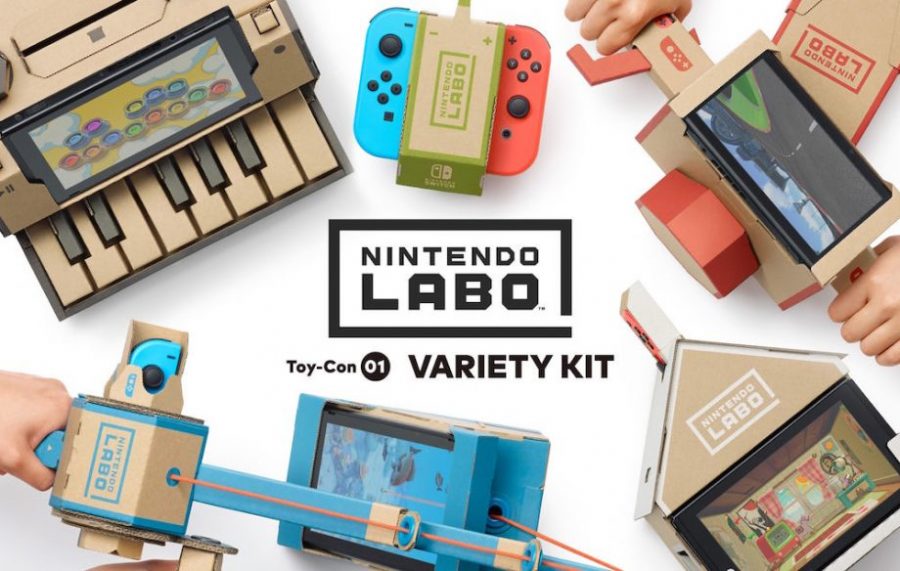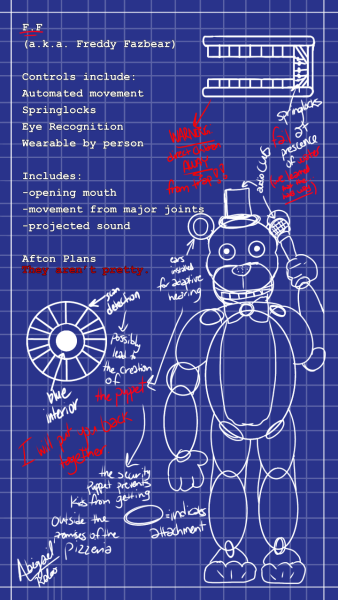Nintendo Labo: Revolutionizing the Gaming Industry with a Piece of Cardboard
Cardboard does not often cross one’s mind. After all, it lacks much presence in our lives outside of the occasional boxed shipment. In the minds of children, however, the stiff material is often regarded quite differently. Simply asking around will elicit childhood memories of the inventive ways in which fun was derived from a mere box. As the growth of technology and video game companies progresses, young and creative minds are pulled away from their beloved cardboard and confined to screens and buttons. Nintendo Labo, a new series of cardboard DIY-style kits from Nintendo, seeks to reverse that trend. Labo blends the ease of use of a video game with the sandbox creativity of cardboard to manufacture a revolutionary new experience.
The game guides players as they fold and construct their Labo creations. Once completed, the Labo has spaces to connect a Nintendo Switch console into the cardboard, making it “come to life.” A cardboard piano gains the ability to play real notes. A cardboard car gains RC capabilities. A cardboard robotic suit becomes a real-life controller for an in-game character. Nintendo Labo opens up endless possibilities. The interaction between video game and cardboard creates gateways to new ideas, drawing younger, new gamers to the Nintendo Switch in a fun and creative way.
Labo might seem like a risky move for Nintendo; however, risk is exactly what makes Nintendo so innovative. Since its inception, Nintendo has found its success in revitalizing antiquated technologies in new and innovative forms. The original Gameboy, which used somewhat old screen and processor technologies, released in 1989 to unprecedented success. The risk in 2006 of the Nintendo Wii, which released with the inclusion of a TV remote-shaped controller, astonished the world, but led the Wii to become the best-selling console in Nintendo’s history. The recent risk in 2017 with the first ever hybrid console, the Nintendo Switch, became the tactic Nintendo needed to escape the failure of the Wii U console. Labo is no exception to Nintendo’s tradition, using the simplicity of cardboard as a medium through which creativity, exploration, and overarching fun flow.
Nintendo Labo branches out into three key concepts: make, play, and discover. These three words serve as the slogan for this new innovation in the gaming industry. By making these cardboard creations through a step-by-step process, kids can enjoy putting the pieces together to create a simple-yet-complex structure of cardboard engineering. Labo endows players with the freedom to customize their Labo creations with color, design, and imagination. Having the ability to play with creations is another fun component of the Labo process. Interacting with cardboard that can play notes like a real piano, use motion controls to interact with a robotic avatar, or even interact with a virtual friend within a cardboard house is what makes Labo such an exhilarating product to use. Discovering the ins-and-outs of one’s creation is a significant part of the Labo experience. Finding out how Labo creations function to accurately portray player inputs in-game is an innovative way to see the engineering capabilities of something as simple as cardboard. These three concepts: making, playing, and discovering, are words that portray what Nintendo Labo has to offer and are enough to convince many that cardboard has attained an entirely new level of creativity and fun.
Two sides exist to every story, and Nintendo Labo is no exception. Junior student and avid fan of Nintendo Dylan Witt believes that it will “get ruined easily because it’s just cardboard.” However, it still “seems interesting” to him. Sebastian Estevez, a junior and long-time fan of Nintendo believes that Labo is a “creative idea that isn’t going to sell because it’s too reliant on specific games.” At launch, Nintendo Labo will only be compatible with proprietary Labo-specific titles. Josh Joseph, a senior and Nintendo Switch owner, demands “something interesting on the software side,” because at the moment, he says, “[Labo] seems like it will be pretty limited.” Despite this negativity, Deja Ebalarosa finds Labo “extremely creative and a new way to enjoy playing games by building.” Ebalarosa is excited to “play the game with creations [she] made” and claims that she will be “buying all the kits when they come out.” Mixed opinions exist surrounding this new idea. Many are aggravated by high prices for cardboard, while others see it as more than just cardboard. Labo is a risk indeed for Nintendo, but the true question lies in whether it will pay off and satisfy gaming consumers.
From paying a premium to enjoying the simplicity of interaction with cardboard, Nintendo Labo has split social media platforms with numerous reviews, memes and opinions. Labo will surely be a product that will be examined, judged, and criticized once it comes out. According to Reggie Fils-Aimé, president of Nintendo of America, Labo is targeted more towards children who are beginning to experience their Nintendo Switch for the first time. Nintendo Labo will be released on April 20th, 2018, with kit prices ranging from $60 to $80. Nintendo Labo may just be glorified and pricy cardboard, but it has the capabilities to make children around the world make, play, and discover.






